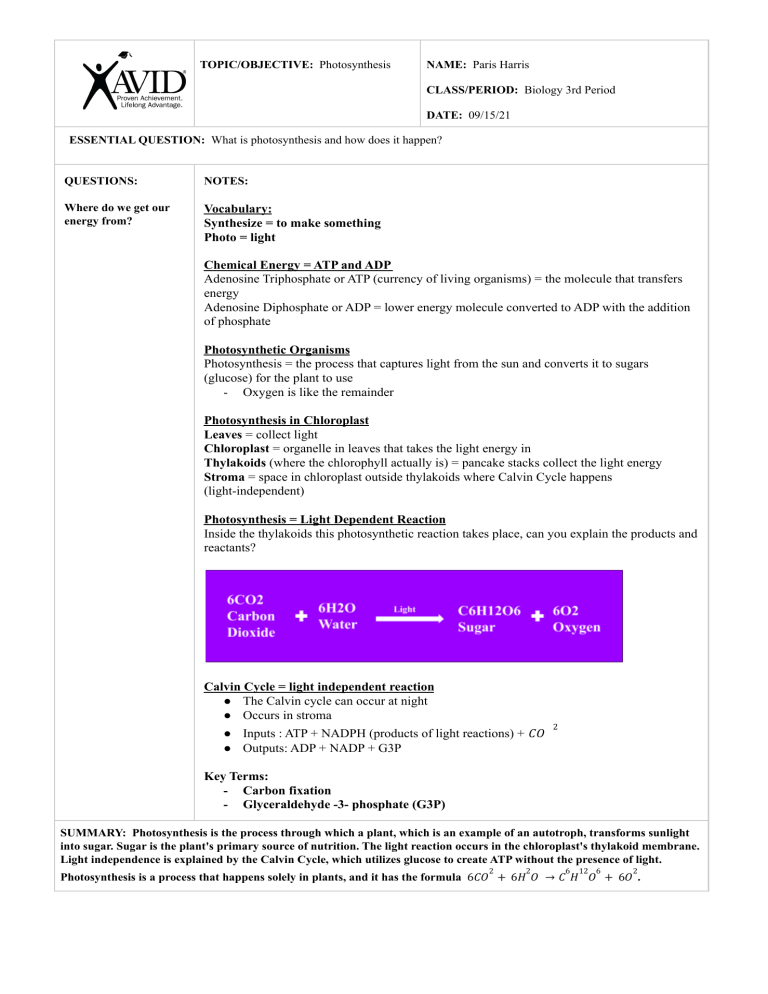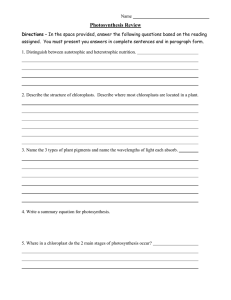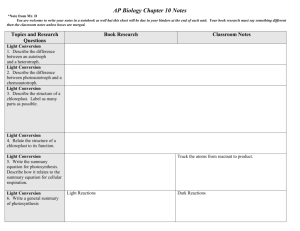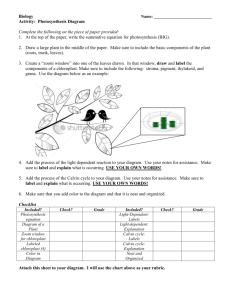
TOPIC/OBJECTIVE: Photosynthesis NAME: Paris Harris CLASS/PERIOD: Biology 3rd Period DATE: 09/15/21 ESSENTIAL QUESTION: What is photosynthesis and how does it happen? QUESTIONS: NOTES: Where do we get our energy from? Vocabulary: Synthesize = to make something Photo = light Chemical Energy = ATP and ADP Adenosine Triphosphate or ATP (currency of living organisms) = the molecule that transfers energy Adenosine Diphosphate or ADP = lower energy molecule converted to ADP with the addition of phosphate Photosynthetic Organisms Photosynthesis = the process that captures light from the sun and converts it to sugars (glucose) for the plant to use - Oxygen is like the remainder Photosynthesis in Chloroplast Leaves = collect light Chloroplast = organelle in leaves that takes the light energy in Thylakoids (where the chlorophyll actually is) = pancake stacks collect the light energy Stroma = space in chloroplast outside thylakoids where Calvin Cycle happens (light-independent) Photosynthesis = Light Dependent Reaction Inside the thylakoids this photosynthetic reaction takes place, can you explain the products and reactants? Calvin Cycle = light independent reaction ● The Calvin cycle can occur at night ● Occurs in stroma ● Inputs : ATP + NADPH (products of light reactions) + 𝐶𝑂 ● Outputs: ADP + NADP + G3P 2 Key Terms: - Carbon fixation - Glyceraldehyde -3- phosphate (G3P) SUMMARY: Photosynthesis is the process through which a plant, which is an example of an autotroph, transforms sunlight into sugar. Sugar is the plant's primary source of nutrition. The light reaction occurs in the chloroplast's thylakoid membrane. Light independence is explained by the Calvin Cycle, which utilizes glucose to create ATP without the presence of light. 2 2 6 12 6 2 Photosynthesis is a process that happens solely in plants, and it has the formula 6𝐶𝑂 + 6𝐻 𝑂 → 𝐶 𝐻 𝑂 + 6𝑂 .





